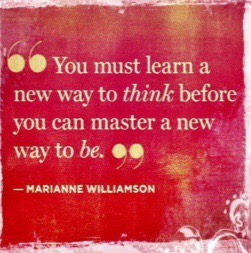
Did you ever think about how business process improvement is like yoga?
I love yoga. There is just something about the stretching and pushing myself that ends in a feeling of accomplishment and well-being. My muscles become stronger and toned, I lose weight, and have more energy- when I stay disciplined and keep doing it. My Yogi (skilled practitioner) says I am a natural and perform all the poses PERFECTLY (never mind that it is a DVD).
However, I have to question my Yogi about my aptitude for yoga. It seems to me when I go to a class (with real people and a real instructor) my performance isn’t quite as impressive as when I am home. This is evidenced by the instructor continually correcting my postures and poses. There is something to be said for having someone trained that can help you achieve your goals and take it to the next level.
What does this have to do with business? Let’s compare goals:
Yoga goals include:
- Increased flexibility
- Increased muscle strength and tone
- Improved respiration, energy and vitality
- The maintenance of a balanced metabolism
- Weight reduction
- Cardio and circulatory health
- Improved athletic performance
- Protection from injury
Business goals include:
- Flexibility to meet customer and regulatory needs
- Increased capability and capacity
- Improved financial strength
- Streamlined and smooth operations
- Waste removal from operations
- Agility to an ever changing environment (technology, globalization)
Organizations work on this every day, every year. Sometimes it works, other times, not so much. Why? I believe it mostly comes down to discipline and support. In their efforts to improve efficiency and profitability, many organizations implement programs like Six Sigma, Lean, and/or TQM to name a few. The thought becomes “so many other organizations have achieved great results with these programs, we will too.” They start this journey anticipating results that will catapult the organization to the top of the charts in short order. (Those of us who like instant gratification can understand this)
So to start, employees are trained (leaders don’t always have time), given “improvement projects” and told to go and conquer the world! And off they go with excitement, energy and new skills to apply and hone. For a while, everyone is on board, people are participating, and leaders are supportive. Then, over time, other needs seem to take precedence and become more urgent, maybe interest wanes, and soon, the structure and disciple that was successful before transforms back into ad hoc projects with process changes made based more on “gut” than numbers, quantitative goals are hit or miss, and little if any direct financial benefit is identified let alone validated by the finance team. (Those of us who are not instantly gratified get this too- “git ‘er done”)
At this point, the improvement program that so many other organizations achieved significant cost savings and profitability becomes “just another failed program that doesn’t provide any benefit” on the wave of increasing costs and decreasing margins. The organization’s health and value begins declining and employee morale to dwindle. (….and we move to the next bandwagon, studio, or diet continuing to expect a silver bullet that remains elusive)
To keep that from happening, Organizations can, and maybe should, engage someone trained and skilled in the chosen improvement program, sort of a Business Yogi. A Business Yogi will cut through the complexity of the organization and identify the best posture and poses that will yield the best results and set realistic expectations. He/She will help leaders identify and prioritize projects, based on quantitative financial data, which will improve the organization’s health and value. The Business Yogi is not there to stroke egos, or soften the message: they are present to ensure you achieve the best results possible. Does that mean that the Business Yogi is the sole person held accountable and responsible for the success or failure of the program? ABSOLUTELY NOT!
Organizational leaders are just as accountable and responsible for the success or failure of any improvement program. If leaders aren’t disciplined there is no model for employees to be disciplined. If leaders don’t clearly understand, support, and share the importance of the improvement program, employees won’t understand, support or believe in its importance either. And this isn’t just an up and down communication. There must be peer accountability as well. It doesn’t do anyone any good to have an improvement project where other areas don’t understand, support or see the benefit for themselves.
Bringing it together…
If you start attending a yoga studio with a skilled Yogi, you will learn and perfect the postures and poses that will help you reach your health and wellness goals. Over time, if you stop going to the studio, maybe to save money, and continue to practice your yoga on your own, your performance will likely decline. Without your Yogi watching and periodically correcting as needed, you may never realize when your postures and poses start to change or shift but you will notice it taking longer to reach your goals.
The same is true for business and improvement. If leaders believe they have perfected performance and stop watching and measuring, performance will begin to deteriorate and the health of the business will be negatively impacted.
Keeping an open eye on internal process performance coupled with service delivery performance will go a long way to ensure lasting capability, capacity, business growth and profitability.
Bottom line…
Never assume perfection will stay. Without monitoring and correction, organizations will end up where they started or worse.
Never assume everyone knows how to improve a process. Some improve it using skill, others by luck. Know the difference.
Never assume what you are monitoring and measuring today is what you need to monitor and measure tomorrow.
Never assume everyone will jump on-board just because you said they had to…..not many follow that blindly, and to those that do…REALLY??
What are your thoughts on challenges of improvement programs in organizations today?
 Through a focused effort on processes and outcomes, you can quickly find most of the problems that negatively affect performance and then find more practical solutions. The more practical the solution the more quickly people can change and accept a new way of doing things.
Through a focused effort on processes and outcomes, you can quickly find most of the problems that negatively affect performance and then find more practical solutions. The more practical the solution the more quickly people can change and accept a new way of doing things.
